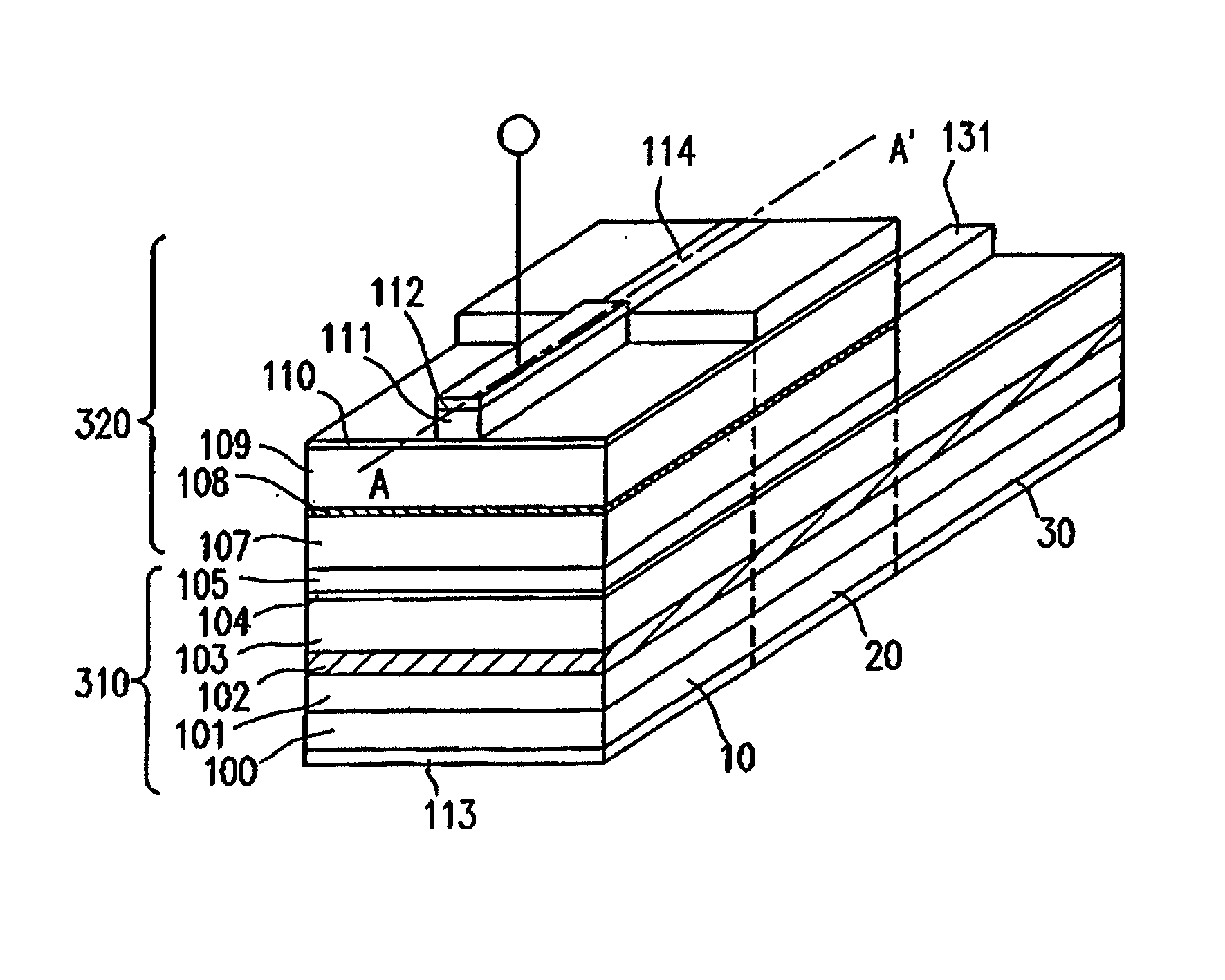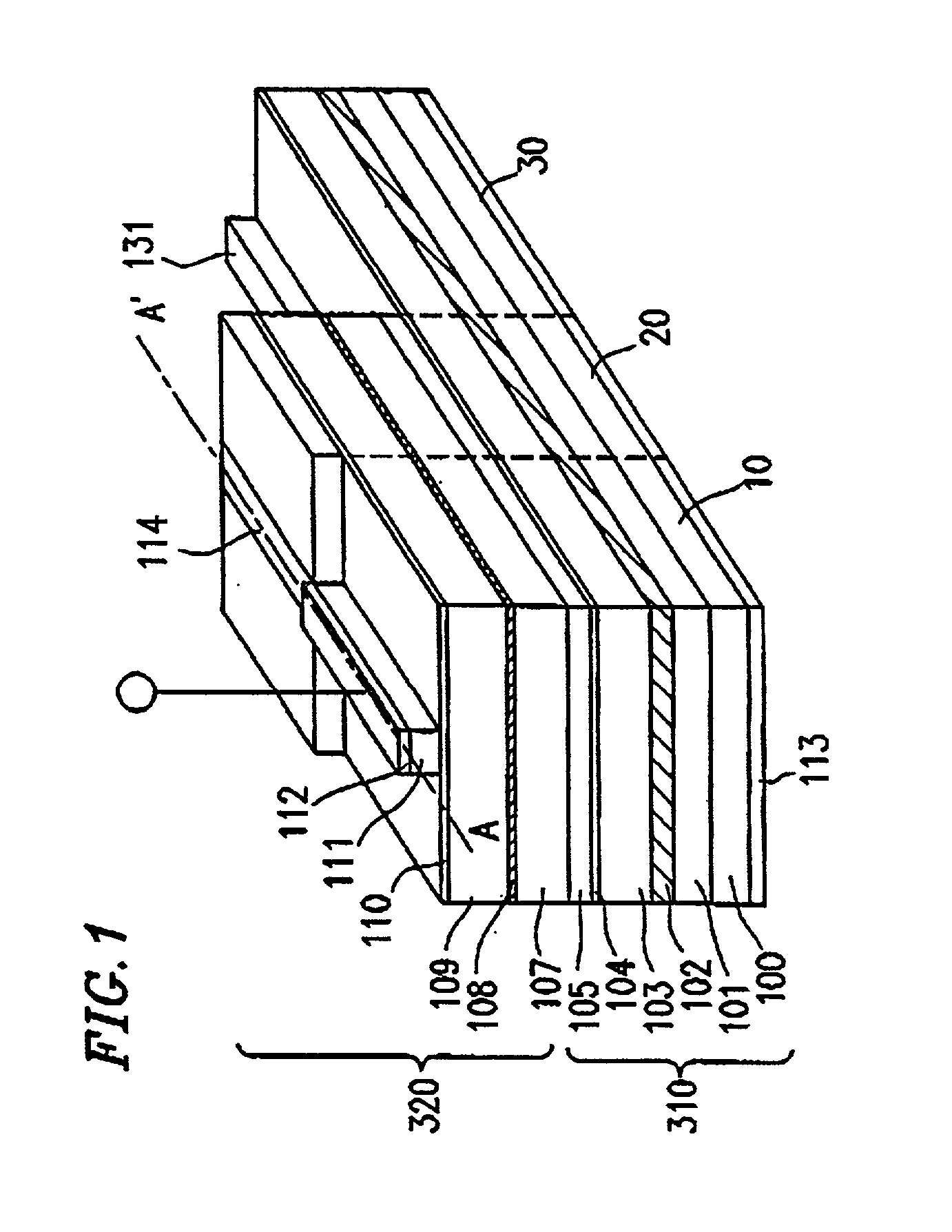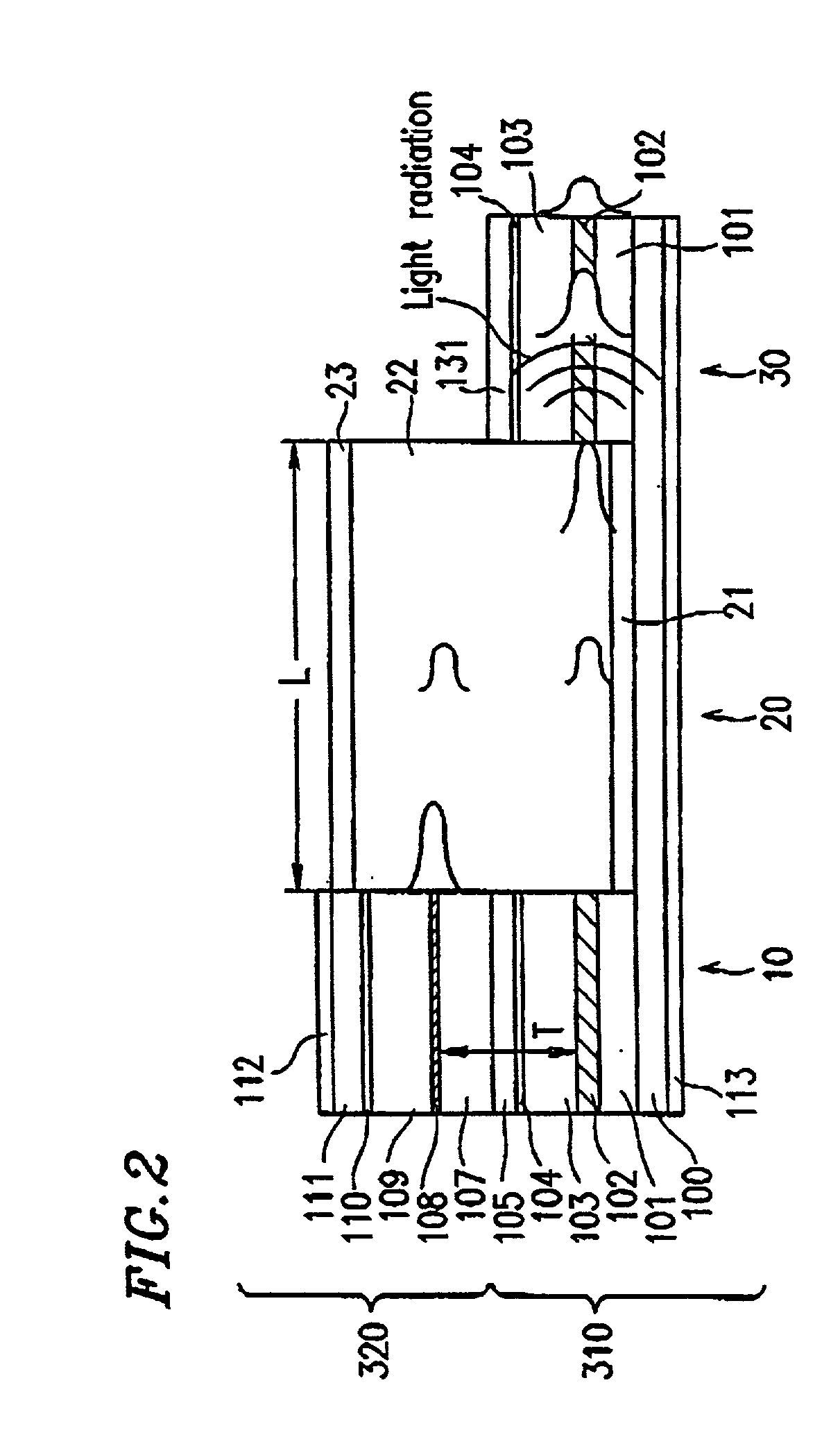Integrated optical circuit device and method for producing the same
- Summary
- Abstract
- Description
- Claims
- Application Information
AI Technical Summary
Benefits of technology
Problems solved by technology
Method used
Image
Examples
example 2
[0083] Example 2 of the present invention will be described with reference to FIG. 3. Specifically, the integrated optical conversion element according to the present example is a mode conversion type laser element which provides for the integration of optical circuit elements with optical coupling at low losses.
[0084] In FIG. 3, the constituent elements which also appear in FIG. 1 are denoted by like numerals.
[0085] First, a method for producing the integrated optical circuit device will be described. As in Example 1, in order to form an optical waveguide, an Al.sub.0.22Ga.sub.0.78As first optical guide layer 101, an Al.sub.0.20Ga.sub.0.80As optical waveguide layer 102 (thickness: 2 .mu.m), an Al.sub.0.22Ga.sub.0.78As second optical guide layer 103, an Al.sub.0.8Ga.sub.0.2As etching stopper layer 104, and an Al.sub.0.22Ga.sub.0.7As third optical guide layer 105 are layered on a GaAs substrate 100 in this order, by using a usual MOCVD method. These layers are formed as undoped layer...
example 3
[0099] An integrated optical circuit device according to Example 3 of the present invention will be described with reference to FIG. 6. Specifically, the integrated optical conversion element according to the present example is a mode conversion type laser element which achieves light distribution conversion along the transverse direction in addition to the light distribution conversion along the vertical direction achieved in Examples 1 and 2.
[0100] In FIG. 6, the constituent elements which also appear in FIG. 3 are denoted by like numerals, and the descriptions thereof are omitted. The process of producing the integrated optical circuit device of the present example is the same as the process described in Example 2.
[0101] In the present example, the multimode interference region 20 has a depth of 4.75 .mu.m, a length of 200 .mu.m, and its buried portion 114 has a gradually varying width between 2 .mu.m (at an end face adjoining the semiconductor laser section 10) and 0.5 .mu.m (at...
example 4
[0109] An integrated optical circuit device according to Example 4 of the present invention will be described with reference to FIG. 7.
[0110] In FIG. 7, the constituent elements which also appear in FIG. 3 are denoted by like numerals, and the description thereof is omitted. The process of producing the integrated optical circuit device of the present example is basically the same as the process described in Example 2 except that a buried portion 114 of the multimode interference region 20 is formed so as to be as wide as 15 .mu.m according to the present example. The center line of the ridge 111 of the semiconductor laser section 10 and the center line of the ridge 131 of the optical waveguide section 30 are arranged so as to have an offset of 6.3 .mu.m along the width direction, and are located in line symmetry with respect to the center of the transverse direction of the multimode interference region 20.
[0111] Hereinafter, the functions of the integrated optical circuit device ac...
PUM
 Login to View More
Login to View More Abstract
Description
Claims
Application Information
 Login to View More
Login to View More - R&D
- Intellectual Property
- Life Sciences
- Materials
- Tech Scout
- Unparalleled Data Quality
- Higher Quality Content
- 60% Fewer Hallucinations
Browse by: Latest US Patents, China's latest patents, Technical Efficacy Thesaurus, Application Domain, Technology Topic, Popular Technical Reports.
© 2025 PatSnap. All rights reserved.Legal|Privacy policy|Modern Slavery Act Transparency Statement|Sitemap|About US| Contact US: help@patsnap.com



